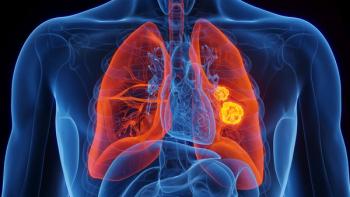
Varicella-zoster Virus Management, Prophylaxis for At-Risk Patients Post-Exposure
Key Takeaways
- Varicella incidence has declined, but herpes zoster cases are increasing, posing risks for immunocompromised individuals.
- High-risk groups need education on managing VZV exposure, including seeking urgent medical attention.
Due to the suboptimal rates of live-attenuated varicella vaccination, outbreaks of varicella-zoster virus still occur, causing incidence of both varicella and herpes zoster.
Due to the suboptimal rates of live-attenuated varicella vaccination, outbreaks of varicella-zoster virus (VZV) still occur, causing incidence of both varicella, also known as chickenpox, and herpes zoster (HZ), also known as shingles, according to a study published in Preventive Medicine Reports.
Although varicella incidence has dramatically declined since the release of the live-attenuated varicella vaccine, HZ incidence continues to rise. For at-risk individuals, severe or fatal complications can result from varicella transmission.
Specifically, at-risk individuals include any adults and children who are receiving immunosuppressive medications or living with comorbidities that increase the risk for severe or complicated primary varicella infection in the absence of preexisting immunity.
In the study, the authors explain that it is critical that providers who care for high-risk individuals (eg, patients with cancer or who are on chemotherapy, transplant patients, patients on immunosuppressive medications for autoimmune/allergic diseases or severe skin conditions, pregnant women, or neonates) should educate these individuals regarding the appropriate action in the event of VZV exposure.
Specifically, these high-risk patients should be advised to urgently seek medical attention in order for medical professionals to assess the individual’s evidence of immunity, type of exposure, and host-immune status regarding the patient’s ability to receive the varicella vaccination safely.
The authors note that it is recommended to pursue post-exposure prophylaxis with varicella vaccination in eligible immunocompetent hosts in order to prevent or mitigate infection, limit disease transmission, and help protect against potential future VZV exposure. This will significantly decrease the potential for exposure to the virus for at-risk individuals who are ineligible for vaccination, such as immunocompromised children and adults, pregnant women, newborns of mothers with varicella shortly before or after delivery, and premature infants, according to the study.
Additionally, the authors explain that it is beneficial for those living in the same house as at-risk individuals should receive a vaccination in order to minimize the introduction of VZV into their household.
In cases of VZV exposure, the providers of at-risk individuals must be able to quickly obtain the necessary tests to assess the patient’s immune status, as well as have rapid access to vaccination and varicella zoster immune globulin in order to inhibit the potential for severe varicella complications.
REFERENCE
Lachiewicz AM, Srinivas ML. Varicella-zoster virus post-exposure management and prophylaxis: A review. Preventive Medicine Reports. 2019;16(101016). doi: 10.1016/j.pmedr.2019.101016.
Newsletter
Stay informed on drug updates, treatment guidelines, and pharmacy practice trends—subscribe to Pharmacy Times for weekly clinical insights.
















































































































































































































